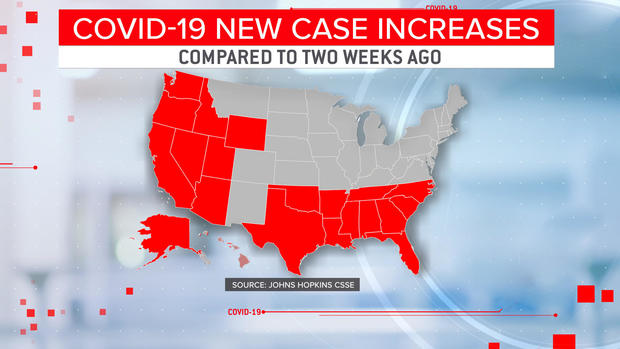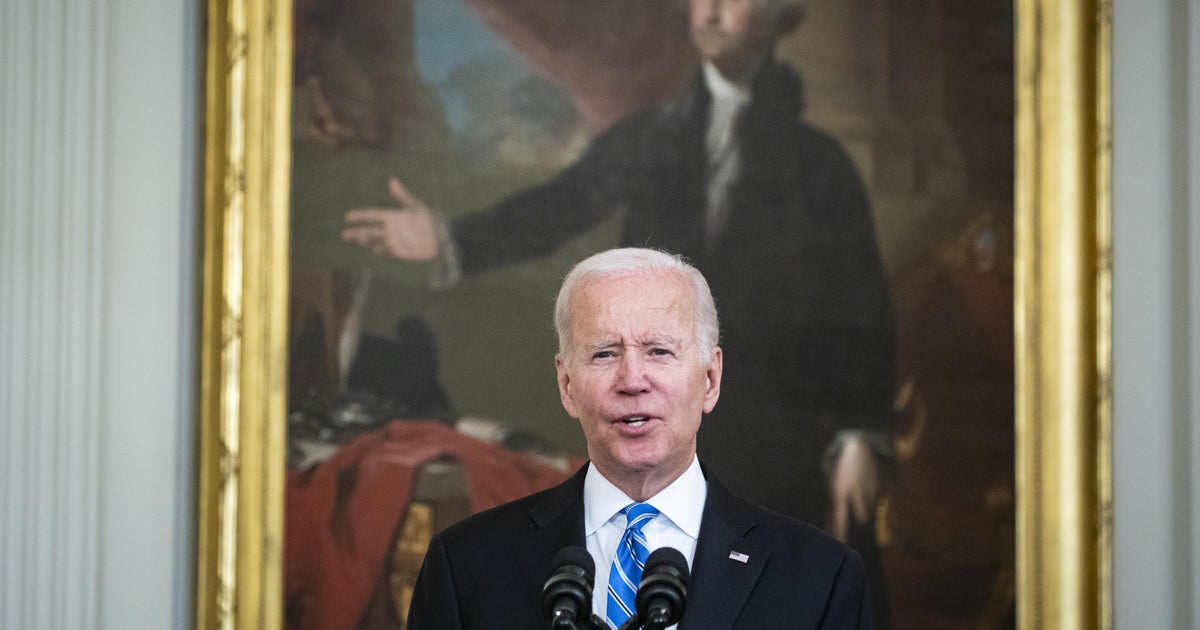Coronavirus model once used by White House now predicts 200,000 U.S. deaths by October
A coronavirus model once used by the White House now projects more than 200,000 Americans could die of COVID-19 by October 1. The prediction went up by more than 30,000 since last week.
As of Tuesday, more than 116,000 people in the U.S. have died of the coronavirus, and the death toll is still growing by hundreds per day. Infection rates and hospitalizations are rising in numerous states as businesses open up and people drop precautions.
According to the latest model from the Institute for Health Metrics and Evaluation at the University of Washington, a research institute once utilized by the White House for coronavirus projections, another 85,000 or so deaths are now projected by October 1.
IHME's interactive projections show that by October 1, deaths from the coronavirus in the United States could reach anywhere from 171,000 to 270,000, with a likely figure in between of about 201,129. Daily deaths from the coronavirus are expected to begin rising again in September, after they started to plateau nationwide this month for the first time.
According to the IHME, "rising mobility and premature relaxation of social distancing in some states are the main reasons" for the projected increase.
IHME Director Dr. Christopher Murray explained the reasons behind the upward trend at a June 11 press briefing, before the institute raised its projections again this week.
"Starting in the third week of August in our forecast at the national level, we see the daily death rate... going up again, after having been declining since mid-April at the national level," he said. "That increase in daily deaths really starts to gather momentum from mid-September onwards."
"What's underlying that is two factors: The steady rise in contact rates, steady rise in mobility, and the likely continued relaxation of mandates over the course of the summer. Combined with the increasingly clear signal that seasonality is important," he said.
According to the IHME, "Higher mobility means higher transmission and more infections at the beginning of the expected second wave" in the fall.
As COVID-19 cases continue to decline in New York, once the epicenter of the nation's outbreak, new hotspots are emerging in states across the South and West. Some health experts say we could be seeing the impact of reopening too early.
To account for the unpredictability of states where hotspots are emerging, the IHME's projection includes a wide range of outcomes, according to Murray. "Part of that range is just quite making sense of what's happening in some of the states such as Arizona, where we see an upsurge in hospitalizations and cases and deaths," he said.
Arizona is seeing more than 1,000 new cases per day, up from fewer than 400 a day in mid-May when stay-at-home orders were eased.
"I think the question of did we open too soon is a valid one," Frank Lovecchio, an emergency medicine doctor in the Phoenix area, told CBS News' Michael George. Lovecchio said he's seen a surge of severe cases requiring intubation.
Murray said IHME adjusted its projections based on a variety of data on people's self-reported numbers of contacts, as well as contextual factors like smoking, air pollution and use of face masks. He called mask use "an important contributor" to their modeling.
The Centers for Disease Control and Prevention issued updated guidelines on Friday to help people minimize their everyday risk of contracting the virus, and emphasized that wearing masks can help.
"It's important that you and the people around you wear a cloth face covering when in public and particularly when it's difficult to stay 6 feet away from others consistently," the CDC said. It also advised people to bring their own food and drinks to cookouts, wave instead of hug, take the stairs instead of elevators, and sanitize hands after using ATMs.
In his briefing, Murray pointed out that the IHME's projections are based on many different factors, and the public's behavior can make a big difference in the final outcome.
"We're making a forecast, clearly what individuals choose to do can moderate that forecast," Murray said. "If mask use starts to go back up in states where it's not very high, that is likely to be very helpful. And if people avoid contacts with people outside their household... that will also moderate the effect."
He added that these safety measures "will become even more important in the fall when the effect of seasonality is to drive up transmission."





